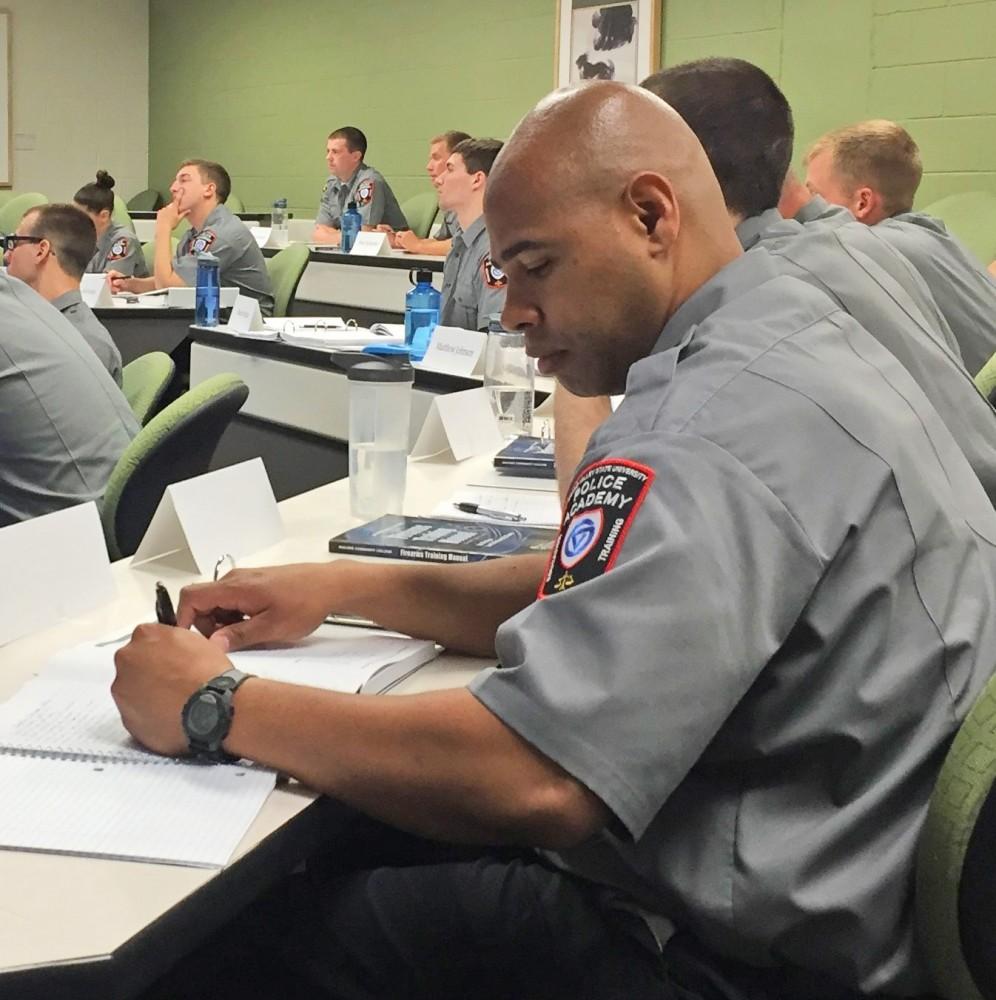Police Academy enters 42nd year at GVSU

GVL / Courtesy – Williamson Wallace
May 9, 2016
Established in 1974, the Grand Valley State University Police Academy has seen more than 1,000 students go through its doors and into the world of law enforcement professionals.
Approved by the Michigan Commission on Law Enforcement Standards, during the 16-week program, participants go through 681 training hours, are trained on criminal law, enforcement procedures, fist aid, firearms and other necessary training elements resulting in the completion of a 15-credit course load through GVSU.
Though the state only mandates 594 hours of training, GVSU provides an additional 87 hours for participants in the program.
Williamson Wallace is currently the director of criminal justice training at the Police Academy. Wallace is responsible for developing, coordinating and implementing in-service law enforcement training programs.
“We go above and beyond the state mandates hours,” Wallace said. “We provide additional training that helps to expand upon the given curriculum.”
This extra training includes information touched on by the required curriculum as well as specialized training on emergency procedures, civil issues and acts of terrorism. Additionally, the supplementary training hours allow students to become more familiar with the kinds of questions and issues they will see on the licensing exam at the end of the academy. Currently, the GVSU academy has a licensing exam pass rate of 100 percent.
“We do a great job at preparing students for the exam and for their professional goals,” Wallace said. “Part of this is from the training and part of it is from the lengthy application process that applicants go through in order to become approved for our academy.”
Before an individual is accepted into the Police Academy, they have to go through a variety of in-depth tests and reference checks. Everything from the way an individual acted at a previous job to relationships with roommates as well as reading and writing skills are evaluated. Potential students also have to interview in front of a panel of local law enforcement personnel before they are accepted. Adding up all the steps and testing, the entire application procedure takes about nine months to complete.
“The application process is lengthy and in-depth,” Wallace said. “We look at everything from character traits to employment history to psychological evaluations, all with the final goal being finding successful candidates.”
Another focus on the Police Academy is success after graduation. Currently, the academy has recorded a 90 to 100 percent job placement average, depending on the year and economy. At least five current GVSU police officers graduated from the Police Academy. Wallace said that the next seven to 10 years will also see an increase in job opportunities for students going through the Police Academy training.
“Baby Boomers are set to be retiring soon. With that comes half to a fourth of law enforcement jobs becoming available,” Wallace said. “The market is great for jobs after graduation, and we are seeing that through our employment records.”
One challenge facing the Police Academy is the issue of diversity. Regarding this year’s class, only two women are currently enrolled and two individuals of a racial minority. The academy is looking to increase the diversity of the program in coming years to fill a demand for officers of a racial minority and females.
“Police stations are trying to be reflective of their communities,” Wallace said. “This is a wonderful career field to get into and stations are working to be as reflective and representative as they can be.”
For more information about the Police Academy at GVSU, visit www.gvsu.edu/cj/policeacademy.























